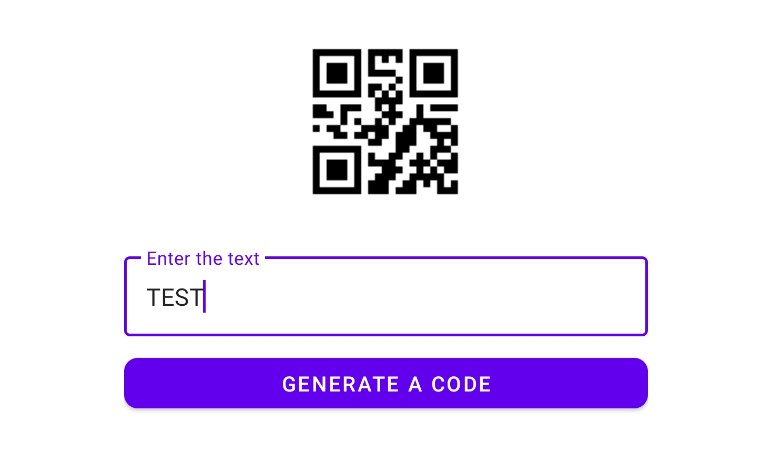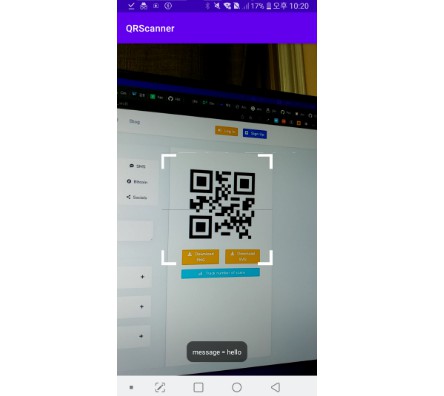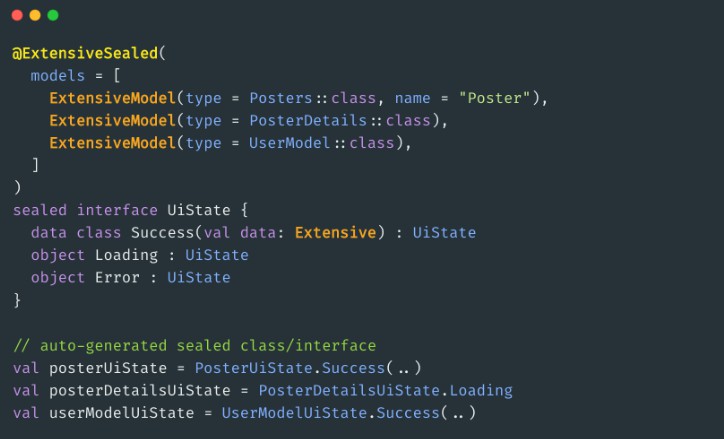qrcode-kotlin
?? Disponível em Português (Brasil)
Creating QRCodes in Kotlin and Java is harder than it should be. QRCode-Kotlin aims to bring a simple, straightforward
and customizable way to create QRCodes into the JVM domain, especially in the backend.
Advantages of QRCode-Kotlin
- Pure Kotlin: Reimplemented on pure Kotlin from a reference implementation of the QRCode spec
by Kazuhiko Arase - Lightweight: No dependencies,
~42KBand it does what it says on the tin. - Easy to use: Instantiate an object, invoke a method, and you’re done ?
- Compact: Doesn’t add any bloat like when using libraries like Google’s ZXing (which do way more than generate
QRCodes) - Customizable output: Want to make a colorful QRCode? We got you!
- Server friendly: This isn’t a library for Mobile applications. This is a library thought by backend developers for
backend developers.
Installation
This library is available from Maven Central
so you can add QRCode-Kotlin to your project as a dependency like any other:
If you’re using Maven – pom.xml:
<dependency>
<groupId>io.github.g0dkar</groupId>
<artifactId>qrcode-kotlin</artifactId>
<version>1.1.0</version>
</dependency>
If you’re using Gradle:
// Kotlin ❤️
implementation("io.github.g0dkar:qrcode-kotlin:1.1.0")
// Groovy
implementation 'io.github.g0dkar:qrcode-kotlin:1.1.0'
Examples and Usage
Here are a few examples of how to use the library to achieve some nice results. If you are interested in more advanced
uses and/or fancier QRCodes, please read the documentation ?
Also, make sure to check our examples folder for codes in Kotlin and Java, and the resulting QRCodes!
Just a plain, simple QRCode, nothing fancy:
To generate a simple QRCode:
val imageData = QRCode("https://github.com/g0dkar/qrcode-kotlin").render()
// Save it as a PNG File:
ImageIO.write(imageData, "PNG", File("example01.png"))
Same code as above, but in Java:
BufferedImage imageData = new QRCode("https://github.com/g0dkar/qrcode-kotlin").render();
// Save it as a PNG File:
ImageIO.write(imageData, "PNG", new File("example01-java.png"));
A QRCode, but bigger
The render() function can receive a cellSize to adjust the size of the resulting QRCode. This parameter represents
the size in pixels of each square of the resulting QRCode. Its default value is 25:
val imageData = QRCode("https://github.com/g0dkar/qrcode-kotlin").render(cellSize = 50)
ImageIO.write(imageData, "PNG", File("example02.png"))
In Java:
BufferedImage imageData = new QRCode("https://github.com/g0dkar/qrcode-kotlin").render(50);
ImageIO.write(imageData, "PNG", new File("example02-java.png"));
Just like Google’s ZXing one!
As of the time of writing, Google’s ZXing library is widely used to render QRCodes.
Its rendering of QRCodes usually adds a “border” (aka “margin”) around the QRCode, usually equal to 1 cell. The
render() function can receive a margin parameter as well, which is how many pixels we want to have as a margin
around our QRCode. By default, the margin parameter is equal to 0.
To have one of these nice looking and spaced QRCode, try doing this:
val cellSize = 30 // pixels
val imageData = QRCode("https://github.com/g0dkar/qrcode-kotlin")
.render(cellSize, margin = cellSize)
ImageIO.write(imageData, "PNG", File("example03.png"))
In Java:
int cellSize = 30; // pixels
BufferedImage imageData = new QRCode("https://github.com/g0dkar/qrcode-kotlin")
.render(cellSize, cellSize);
ImageIO.write(imageData, "PNG", new File("example03-java.png"));
A splash of Color
Want to have a colorful QRCode? Easy-peasy! The render() function also have the brightColor, darkColor and
marginColor parameters just for that. Their default values are Black-and-White squares with a White margin. These are
plain, (very) old java.awt.Color values in the RGBA space.
For fun, this will make a QRCode with GitHub’s Dark Mode colors:
val background = Color(139, 148, 158)
val foreground = Color(13, 17, 23)
val imageData = QRCode("https://github.com/g0dkar/qrcode-kotlin").render(
brightColor = background, // Background
darkColor = foreground, // Foreground (aka the "black squares")
marginColor = background // Margin (ignored since margin = 0)
)
ImageIO.write(imageData, "PNG", File("example04.png"))
In Java:
Color background = new Color(13, 17, 23);
Color foreground = new Color(139, 148, 158);
QRCode qrCode = new QRCode("https://github.com/g0dkar/qrcode-kotlin");
BufferedImage imageData = qrCode.render(25, 0, qrCode.encode(), background, foreground, background);
ImageIO.write(imageData, "PNG", new File("example04-java.png"));
Spring Framework and/or Spring Boot
One of the main reasons I developed this library was to use it on a Spring Boot API that needed to generate QRCodes. So
it is only natural to show how to do that ?
import org.springframework.core.io.ByteArrayResource
import org.springframework.http.HttpHeaders.CONTENT_DISPOSITION
import org.springframework.http.MediaType.IMAGE_PNG_VALUE
@GetMapping("/qrcode")
fun generateQrCode(content: String): ResponseEntity<ByteArrayResource> {
val imageData = QRCode(content).render()
val imageBytes = ByteArrayOutputStream().also { ImageIO.write(imageData, "PNG", it) }.toByteArray()
val resource = ByteArrayResource(imageBytes, IMAGE_PNG_VALUE)
return ResponseEntity.ok()
.header(CONTENT_DISPOSITION, "attachment; filename=\"qrcode.png\"")
.body(resource)
}
License
Copyright 2021 Rafael M. Lins, Licensed under the MIT License.
QR Code is trademarked by Denso Wave, inc.
Support and Links
- If you found any bugs,
please open an Issue
? - Have any suggestions? You
can make them
as well!
If you enjoyed the library and want to get me some coffee, use the button below ?
Documentação em Português (Brasil)
Criar QRCodes em Kotlin e Java é mais difícil do que deveria. O QRCode-Kotlin tenta trazer uma forma simples, direta e
personalizável de se criar QRCodes para o domínio da JVM, especialmente no backend.
Vantagens do QRCode-Kotlin
- Kotlin Puro: Reimplementação em puro Kotlin a partir da implementação de referência da especificação do QRCode
por Kazuhiko Arase - Leve: Sem dependencias,
~42KBe faz exatamente o que promete fazer. - Fácil de usar: Instancie um objeto, chame um método e pronto ?
- Compacta: Não adiciona nenhum “inchaço” como quando se usa bibliotecas como a Google ZXing (que fazem bem mais que
gerar QRCodes) - Saída Personalizada: Quer um QRCode colorido? Nós temos!
- Amigável aos Servidores: Esta não é uma biblioteca para aplicações Mobile. Esta biblioteca foi pensada por devs
backend para devs backend.
Instalação
Esta biblioteca está disponível a partir da Central Maven,
então basta adicionar o QRCode-Kotlin a seu projeto como qualquer outra dependência:
Se você utiliza Maven – pom.xml:
<dependency>
<groupId>io.github.g0dkar</groupId>
<artifactId>qrcode-kotlin</artifactId>
<version>1.1.0</version>
</dependency>
Se você utiliza Gradle:
// Kotlin ❤️
implementation("io.github.g0dkar:qrcode-kotlin:1.1.0")
// Groovy
implementation 'io.github.g0dkar:qrcode-kotlin:1.1.0'
Exemplos e Usos
Aqui estão alguns exemplos de como utilizar a biblioteca para se ter alguns resultados bacanas. Se você tiver interesse
em usos mais avançados ou QRCodes mais sofisticados, por favor leia a documentação ?
Apenas um QRCode simples, nada demais:
Para gerar um QRCode simples:
val dadosImagem = QRCode("https://github.com/g0dkar/qrcode-kotlin").render()
// Salvar como um arquivo PNG:
ImageIO.write(dadosImagem, "PNG", File("exemplo01.png"))
O mesmo que o código acima, em Java:
BufferedImage dadosImagem = new QRCode("https://github.com/g0dkar/qrcode-kotlin").render();
// Salvar como um arquivo PNG:
ImageIO.write(dadosImagem, "PNG", new File("exemplo01-java.png"));
Um QRCode, mas maior
A função render() pode receber o parâmetro cellSize para ajustar o tamanho do QRCode resultante. Este parâmetro
representa o tamanho em pixels de cada quadrado no QRCode resultante. Seu valor padrão é 25:
val dadosImagem = QRCode("https://github.com/g0dkar/qrcode-kotlin").render(cellSize = 50)
ImageIO.write(dadosImagem, "PNG", File("exemplo02.png"))
Em Java:
BufferedImage dadosImagem = new QRCode("https://github.com/g0dkar/qrcode-kotlin").render(50);
ImageIO.write(dadosImagem, "PNG", new File("exemplo02-java.png"));
Igual ao Google ZXing!
No momento da escrita desta documentação, a biblioteca Google ZXing é amplamente
utilizada para se gerar QRCodes. Seus resultados normalmente incluem uma “borda” (também chamada de “margem”) ao redor
do QRCode, geralmente com 1 célula de tamanho. A função render() também pode receber um parâmetro margin com a
quantidade de pixels que queremos ter como margem ao redor do QRCode. Por padrão, o parâmetro margin é igual a 0
.
Para se ter um desses QRCodes bem espaçados, tente fazer o seguinte:
val tamanhoCelula = 30 // pixels
val dadosImagem = QRCode("https://github.com/g0dkar/qrcode-kotlin")
.render(tamanhoCelula, margin = tamanhoCelula)
ImageIO.write(dadosImagem, "PNG", File("exemplo03.png"))
Em Java:
int tamanhoCelula = 30; // pixels
BufferedImage dadosImagem = new QRCode("https://github.com/g0dkar/qrcode-kotlin")
.render(tamanhoCelula, tamanhoCelula);
ImageIO.write(dadosImagem, "PNG", new File("exemplo03-java.png"));
Um toque de Cor
Quer um QRCode colorido? Fácil, fácil! A Função render() também tem os parâmetros brightColor, darkColor e
marginColor para isso. Seus valores padrão são para quadrados Preto-e-Branco com uma margem Branca. Esses são simples
e (bem) velhos valores java.awt.Color no espaço RGBA.
Por diversão, este código cria um QRCode com as cores do Modo Escuro do GitHub:
val fundo = Color(13, 17, 23)
val principal = Color(139, 148, 158)
val dadosImagem = QRCode("https://github.com/g0dkar/qrcode-kotlin").render(
brightColor = fundo, // Fundo
darkColor = principal, // Primeiro Plano (ou "os quadrados")
marginColor = fundo // Margem (ignorado pois margem = 0)
)
ImageIO.write(dadosImagem, "PNG", File("exemplo04.png"))
Em Java:
Color fundo = new Color(13, 17, 23);
Color principal = new Color(139, 148, 158);
QRCode qrCode = new QRCode("https://github.com/g0dkar/qrcode-kotlin");
BufferedImage dadosImagem = qrCode.render(25, 0, qrCode.encode(), fundo, principal, fundo);
ImageIO.write(dadosImagem, "PNG", new File("exemplo04-java.png"));
Spring Framework e/ou Spring Boot
Uma das razões principais que desenvolvi essa biblioteca foi para utilizá-la em uma API Spring Boot que necessitava
gerar QRCodes, então é apenas natural mostrar como se fazer isso ?
import org.springframework.core.io.ByteArrayResource
import org.springframework.http.HttpHeaders.CONTENT_DISPOSITION
import org.springframework.http.MediaType.IMAGE_PNG_VALUE
@GetMapping("/qrcode")
fun generateQrCode(content: String): ResponseEntity<ByteArrayResource> {
val imageData = QRCode(content).render()
val imageBytes = ByteArrayOutputStream().also { ImageIO.write(imageData, "PNG", it) }.toByteArray()
val resource = ByteArrayResource(imageBytes, IMAGE_PNG_VALUE)
return ResponseEntity.ok()
.header(CONTENT_DISPOSITION, "attachment; filename=\"qrcode.png\"")
.body(resource)
}
Licença
Direito Autoral 2021 Rafael M. Lins, Licenciado pela Licença MIT (texto em inglês).
QR Code é marca registrada de Denso Wave, inc.
Suporte e Links
- Se encontrou bugs, por
favor abra uma Issue
? - Tem sugestões?
Você pode fazê-las
também!
Se curtiu a biblioteca e quiser me pagar um café, utilize o botão abaixo ?





